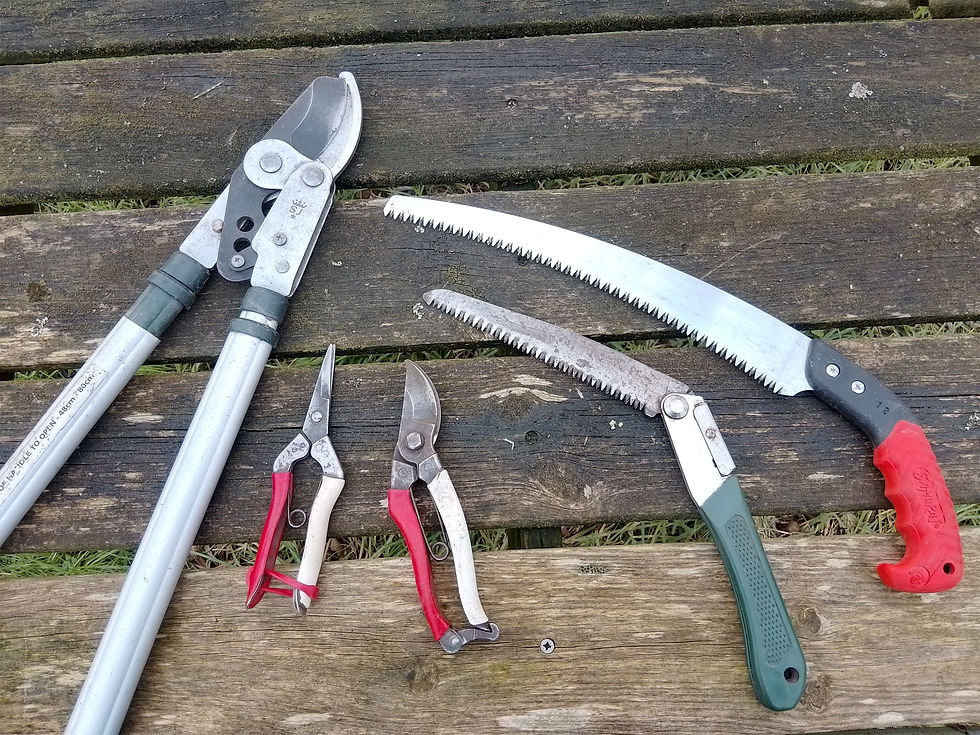Hibernation Hideouts
- Nancy Lowe

- Oct 10, 2020
- 3 min read
Updated: Sep 22, 2021
As I write, the weather outside has begun to take a turn for the autumnal. I have started stacking logs for my fire and I'm sure there are loads of bugs and beasties who are feeling just like me and are trying to find cosy corners to settle in to for the coming winter months. What can we do as gardeners to help our garden wildlife spend their winter happily snuggled up, safe and warm and ready for a great start to next year?

Here in the UK, winter is a very quiet season, as so many of our wildlife neighbours either move out to warmer climes or move in to hibernation. I'm watching the geese fly over our home here in Shropshire each night and in the meantime, I've started to adapt some of my gardening practices to help provide shelter for those who would rather stay put.
There are three main things I like to pay attention to at this time, to be sure I'm giving everyone a helping hand - I like to provide hideouts for hibernating insects, such as ladybirds and solitary bees, I like to make sure larger animals such as mice and hedgehogs have access to plenty of bedding materials and I like provide some privacy during winter, leaving certain areas consistently untouched so my garden companions can feel safe and secure each winter, knowing that this space is always for them.
My bug hotel will be refreshed over the coming weeks. I plan to build a few more layers with more left over bricks and tiles. I fill the space with stones from my beds and borders (I have a lot!) and collect hollow stems, sticks and seed heads during autumn to fill up the cavities all around the outside that you can see. All the different shaped items I push into these gaps provide homes for different sizes of insect. So long as they're fresh and dry, they'll last really well through until the spring.

When I cut down my mini meadow, this gives me loads of potentially great bedding material for hibernating animals, such as hedgehogs and mice. I use it to mulch parts of the garden that I will be planting up in the spring. This means that as well as making potential hibernation boltholes, it's helping to prep up my growing space for me, mulching out weeds and protecting the soil structure. Double win! If I didn't have my meadow, I would be using spent vegetable plant tops, dried grass clippings or fallen autumn leaves.

Lastly, there are a few great habitats a lot of gardens share that it's good to leave alone over winter. Remember that each time animals are disturbed from their slumber, they really need to find something to eat or they're going to be using up valuable energy in being awake that they need to get them through until spring. The compost bin is a classic go to hibernation spot, making a great winter home for toads, newts and mice, to name a few. If you're in the habit of turning your compost, September to October is a good time to make the last turn of the year. Any later than this and it's best to leave it alone until spring so everyone can survive through until then, undisturbed.

Other places I like to leave alone include stone, leaf and wood piles. These are great for ground dwelling insects, as well as hedgehogs, toads, newts and mice. I also try to leave areas of tufty grass as this is good for overwintering moths. The very end of the garden lies undisturbed for most of the year. I don't mind the nettles and brambles here, as I know that come spring time, this area is absolutely thrumming with all kinds of life.

What opportunities do you have to help your garden wildlife this autumn and winter? Share your top tips below, or get in touch if you'd like some help getting your garden set up for your local wildlife to settle in to.







Comments